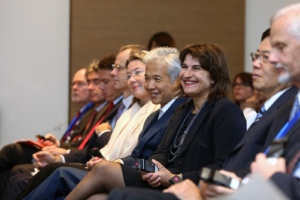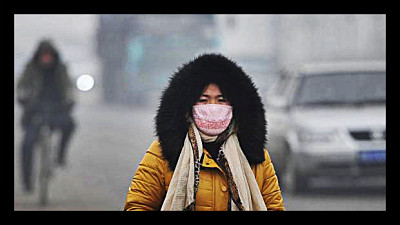
The Bazaar Stars Charity Night (BSCN) is the first charity auction party in China and also goes far in illustrating a new model of charity in China, which integrates fashion, charity, celebrities and the media while doing fundraising in the form of auctions.
Many national celebrities, including famous singers, actors, entrepreneurs and artists, attend the auction party and bid on luxury items each year, the funds of which go to those in need. The media and merchandise brand names are also very supportive.
Over the last 10 years, BSCN has collected about $25 million, sponsored 13 charity organizations and supported people and families in need. Moreover, in 2007, this event was the only charity event awarded with National Charity Award in China.
As more and more celebrities join the event, BSCN has become the biggest and most influential, non-governmental charity event in China.
Mang Su, the executive publisher of Harper’s Bazaar, initiated the event in 2003 and organizes it every year. In fact, Su is a leader in Chinese fashion and one of the top philanthropists in China. Her idea, “Making Charity Fashion,” has, moreover, created a new approach to philanthropy.
Su explained that philanthropy is not about living frugally and saving money for others, but about creating a more valuable society as a whole. “I want to contribute to charity in an innovative and fashionable way,” Su said. “Just like pursuing fashion, such as a gorgeous hairstyle or a beautiful lipstick. Everyone asks, ‘have you given to charity?’”
The purpose of the BSCN event is to help people to understand the importance of advancing society while creating their fortunes. “Not everyone can help others at the cost of his (or her) career, but everyone has a kind heart,” Su stated. “I hope this event can encourage people to express their kindness while fighting for their career and dreams.”
Xinyu Zhao, an investor of Gold Palm Club, bought a Dior sweet-smelling perfume for about $7,246.38. “I would never buy perfume for this amount normally, but this time it is for the charity. I feel very happy,” Zhao said.
Furthermore, Bingbing Li, a Chinese actress and singer, explained that the ten-year persistence of philanthropy is also a form of attitude.
At present, BSCN is not only an auction but also includes in its bag of delights, an evening banquet with dancing, which make the event even more fashionable. “With the development of society, more rich people are emerging. They have their own lifestyle,” Su said. She considers charity activities an elegant lifestyle and exclusive entertainment for the wealthy.
As more and more fashionable activities are related to some form of charity, Su believes charity events similar to the BSCN can bring wealthy celebrities closer to the idea of charity and bring them a deeper understanding of it.
“Some day, behind the rich lifestyle, people will find that it’s only by offering their love and generosity that they can realize their true class,” Su said.
Compared to China’s past charity activities, which were low key and mainly held by private individuals, current charity activities, such as the BSCN, have allowed the rich and famous of the Chinese nation to personally get involved to give back some of their fortunes openly and freely. More and more Chinese philanthropists are emerging, thus representing a new class of Chinese citizens who are on the way to understanding the concept of sharing.
– Liying Qian
Sources: Harper’s Bazaar, SINA, Trends, Women of China


 Smog in China is an ongoing issue. China’s ongoing process of industrialization has resulted in extreme amounts of pollution in many of its cities. Because of the national dependence on particularly dirty fossil fuels, millions of citizens wear surgical masks when venturing outside because the air is just too dirty to breathe safely.
Smog in China is an ongoing issue. China’s ongoing process of industrialization has resulted in extreme amounts of pollution in many of its cities. Because of the national dependence on particularly dirty fossil fuels, millions of citizens wear surgical masks when venturing outside because the air is just too dirty to breathe safely. Xi Jinping who is a General Secretary of the Communist Party of China visit the Fuping County late last December. Fuping County is regarded as one of the most impoverished localities in China with an annual net income per capita that is less than half the set poverty line of 2300 yuan, or $390 USD.
Xi Jinping who is a General Secretary of the Communist Party of China visit the Fuping County late last December. Fuping County is regarded as one of the most impoverished localities in China with an annual net income per capita that is less than half the set poverty line of 2300 yuan, or $390 USD.
